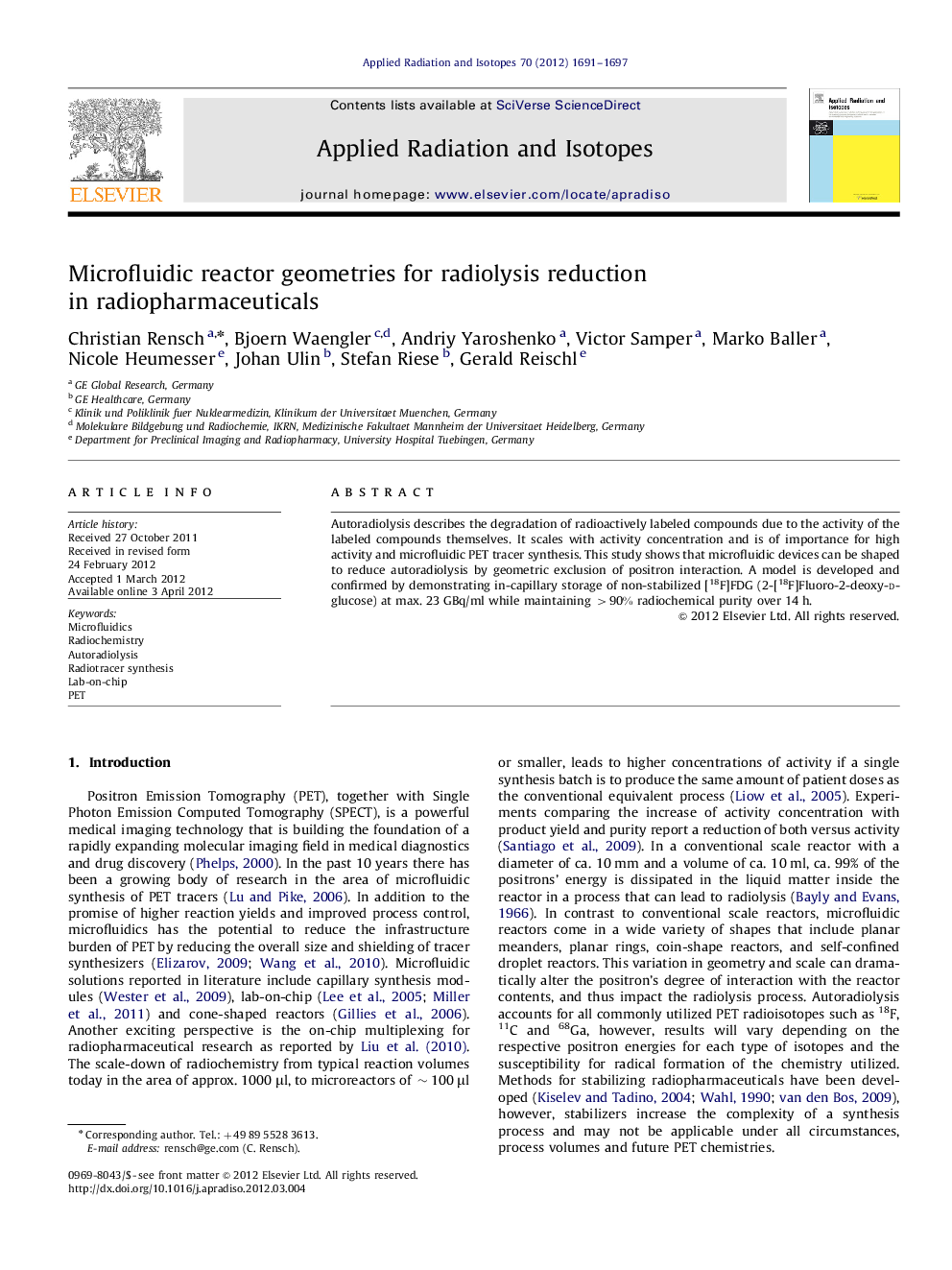| Article ID | Journal | Published Year | Pages | File Type |
|---|---|---|---|---|
| 1877718 | Applied Radiation and Isotopes | 2012 | 7 Pages |
Autoradiolysis describes the degradation of radioactively labeled compounds due to the activity of the labeled compounds themselves. It scales with activity concentration and is of importance for high activity and microfluidic PET tracer synthesis. This study shows that microfluidic devices can be shaped to reduce autoradiolysis by geometric exclusion of positron interaction. A model is developed and confirmed by demonstrating in-capillary storage of non-stabilized [18F]FDG (2-[18F]Fluoro-2-deoxy-d-glucose) at max. 23 GBq/ml while maintaining >90%>90% radiochemical purity over 14 h.
► Autoradiolysis reduction of [18F]FDG at up to 23 GBq/ml utilizing small vessel geometries instead of stabilizers or scavengers. ► Theoretical model on positron interaction and autoradiolysis in radiopharmaceuticals. ► Evidence suggest microfluidics to work for high activity PET tracer batch production. ► New vessel design concepts for PET tracer production and storage.
